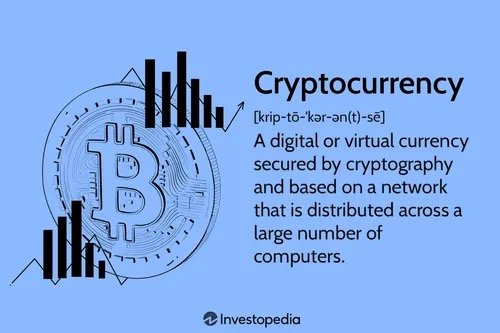Cryptocurrencies: From Niche Phenomenon to Financial Powerhouse

In just over 15 years, cryptocurrencies have evolved from a niche curiosity to an integral part of the global financial system. Their growing popularity has attracted both institutional investors and retail traders, making them impossible to ignore. Today, the crypto market has surpassed a staggering $3.3 trillion in value.
In the United States, prominent figures such as former President Donald Trump and billionaire entrepreneur Elon Musk frequently discuss crypto-related topics, signaling its increasing relevance. Meanwhile, in Italy, interest is growing even among those unfamiliar with finance, as evidenced by a recent in-depth article by journalist Milena Gabanelli on Corriere della Sera’s online platform.
The Evolution of Cryptocurrencies: From Utopian Dream to “Digital Gold”
Gabanelli’s analysis explores the trajectory of Bitcoin, tracing its journey from an idealistic vision of a decentralized currency—free from government and financial institution control—to an asset increasingly likened to gold. Once perceived as an experimental financial alternative, Bitcoin has become a sought-after store of value, used as a hedge against inflation and market crises.
A key factor in Bitcoin’s appeal is its scarcity. Its supply is hard-capped at 21 million coins, as dictated by its source code. This programmed limitation mirrors the scarcity of precious commodities like gold, reinforcing its value proposition. The belief that Bitcoin's limited availability will drive long-term demand has led institutional investors—including major players such as BlackRock in the U.S. and Intesa Sanpaolo in Italy—to view it as an attractive option for portfolio diversification.

The Dark Side of the Crypto Boom
However, Gabanelli also highlights the less glamorous side of the crypto industry: the rising tide of fraud and market manipulation. This issue has been a persistent concern for seasoned observers of the space, including those following Cryptonews.
One of the most prevalent scams in the crypto world is the “pump and dump” scheme. This involves artificially inflating the value of a cryptocurrency through coordinated buying efforts and aggressive promotion—often leveraging social media and even celebrity endorsements. Unsuspecting investors, lured by promises of quick gains, buy in at inflated prices. Then, early investors or scheme organizers sell off their holdings, causing a sharp price crash that leaves new entrants with substantial losses.
Recent examples include the market chaos surrounding Libra and the controversy involving Argentine President Javier Milei. Additionally, former U.S. President Donald Trump’s meme coin, $TRUMP, soared from $0.18 to $75 before plummeting to $15—wiping out $2.2 billion in value for 885,000 investors. Yet, an anonymous trader, with impeccable timing, managed to pocket $109 million, while the Trump Organization, which holds 800 million $TRUMP tokens, reportedly earned $349.6 million within a month, profiting from trading fees.
The core issue is that thousands of new crypto projects emerge each year, many lacking solid foundations or real utility. Instead, they serve as vehicles to extract funds from unsuspecting investors. Research by Chainalysis estimates that 3.6% of cryptocurrencies launched in 2024—out of more than 74,000—were involved in manipulative schemes. This underscores the importance of thorough due diligence before investing in any token, favoring well-established and reputable projects.

Regulatory Challenges and the Need for Greater Investor Protection
Why is it so easy for fraudulent schemes to proliferate in the crypto space? The primary reason is the lack of clear and consistent regulation. In the U.S., for example, there are no specific federal laws governing cryptocurrencies, and regulatory actions are inconsistent, varying by jurisdiction.
Although agencies like the Securities and Exchange Commission (SEC) have taken steps to address fraud, their approach has often been criticized as reactive, inconsistent, or even overly aggressive—particularly under former SEC Chairman Gary Gensler, whose enforcement actions were sometimes perceived as excessively punitive.
In Italy, the situation is similar. The crypto market is expanding, but investor protections remain weak. While exchanges must comply with general anti-money laundering and transparency regulations, scams still pose a significant risk for inexperienced investors.
However, Europe has taken a more proactive approach. The Markets in Crypto-Assets (MiCA) regulation, introduced by the European Union, aims to establish a clear and uniform legal framework for digital assets. Approved in 2023 and rolling out between 2024 and 2025, MiCA seeks to enhance transparency, security, and investor protection across all EU member states.

Final Thoughts: Opportunity or Risk?
Cryptocurrencies undoubtedly present significant opportunities for those willing to navigate their complexities. With greater financial education and careful selection of investment platforms and projects, investors can capitalize on the growth potential of this emerging market.
However, the promise of quick profits often masks considerable risks. The crypto space remains riddled with uncertainty, speculation, and fraudulent activities, making due diligence and vigilance essential. While mainstream adoption continues to rise, it is crucial to remain cautious about questionable projects and unsustainable hype.
To secure its long-term legitimacy, the crypto industry must embrace stronger regulatory frameworks and prioritize investor protection. Only then can it evolve into a stable and trustworthy financial asset class rather than a speculative Wild West.
https://www.reddit.com/r/CryptoCurrency/comments/1jd8j0f/cryptocurrencies_from_niche_phenomenon_to/
The rewards earned on this comment will go directly to the people( @davideownzall ) sharing the post on Reddit as long as they are registered with @poshtoken. Sign up at https://hiveposh.com. Otherwise, rewards go to the author of the blog post.
Interesting!
Thanks for sharing this analysis!